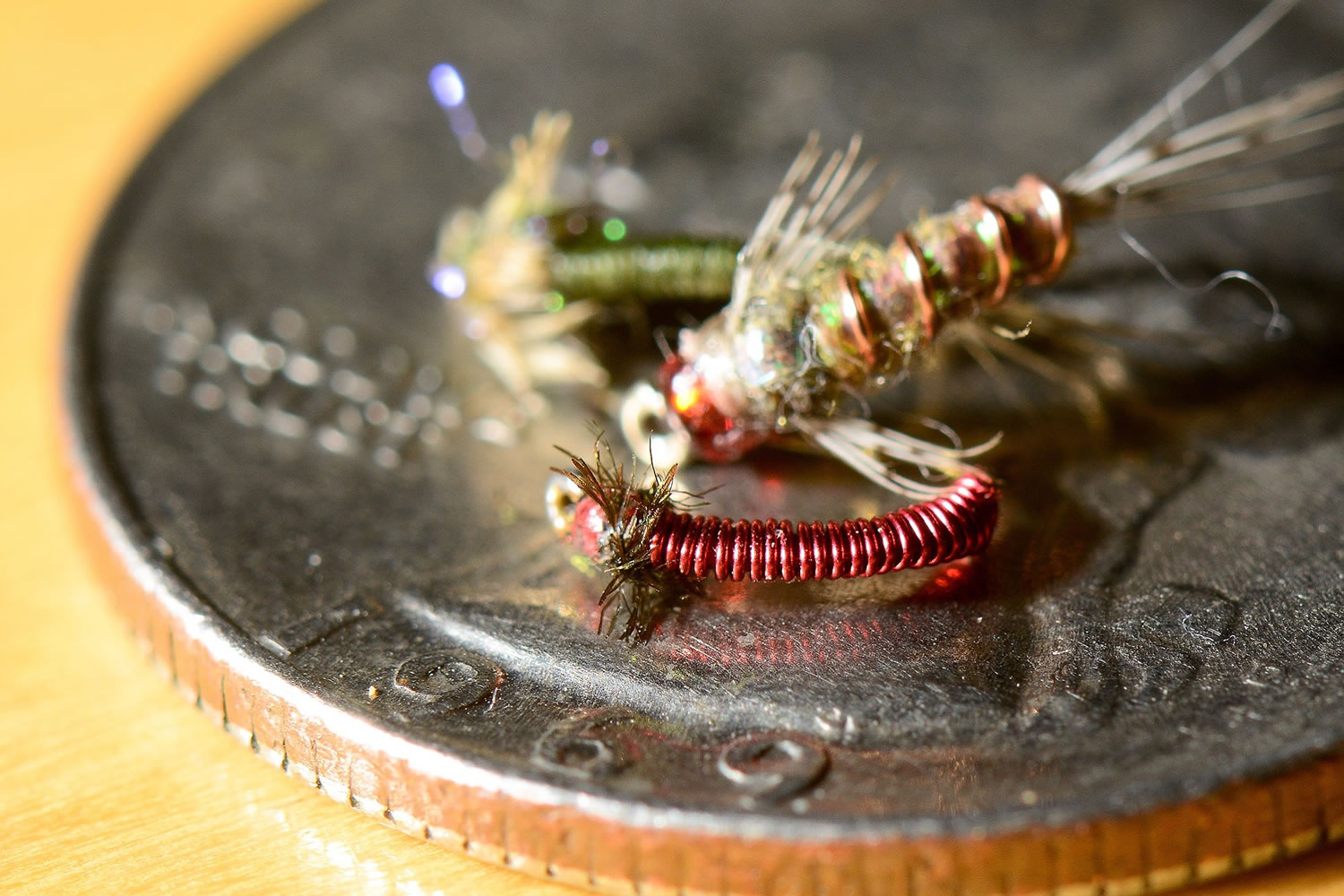BOZEMAN, Mont. — I hit the water this month for the first time in a while. The Madison River was flowing clear and cold below Bear Trap Canyon, the type of flows I associate with late-winter fishing.
It was Sunday, the first day of daylight saving time, and the sun hung long and low on the western horizon, draping the sweeping benches above the Madison in golden light. I fished my Tenkara rod, casting nymphs into the deep pools and chasing after a few fish a bit too robust for my 4X tippet.
As the day neared its close, I sat down on the bank to watch my friend fish a pool. The water dropped off a shelf and the flow turned green with the depth of the river. At the tail of the pool the river split. A small channel ran in front of me near the head of the island. Skittering frenetically on the surface of the water were dozens of midges. I imagined them as surfers on giant waves or ships sailing on a turbulent sea.
Midges, known scientifically as chironomids, are tiny insects that inhabit many of Montana’s rivers and lakes. They bear a physical resemblance to mosquitoes, but do not bite and may hatch on waters across the state any day of the year.
Because of their abundance and widespread availability, midges can play a significant role in the diet of trout, despite their diminutive size. It is not uncommon to see pods of fish rising to midges, even on the coldest days of winter. As water temperatures increase with the coming of spring, heavy hatches of midges may occur on area rivers.
There are four stages in the lifecycle of midges.
First, eggs are laid on the surface of the water by an adult midge. According to the Department of Entomology North Carolina Cooperative Extension, “each gelatinous egg mass may contain up to 3,000 eggs depending on the species.” The eggs sink to the bottom of the water and hatch out in several days.
After hatching, the larvae leave the egg mass and burrow into mud or build small tubular casings to inhabit. Midges enlarge their casings as they develop, feeding on organic matter in the water or mud. They take on a red color as they mature, the result of the iron-containing compound, haemoglobin, found in midge’s blood. Midges remain in their larval stage for two to seven weeks depending on water temperature.
Midge larvae metamorphose into pupae while still in their casings. Midges remain in a pupal form for three days before swimming to the surface of the water and emerging.
Following emergence, midges mate in swarms. Mating midges may appear like fuzzy clusters on a river’s surface, or large clouds hovering above lakes. Midges do not feed as adults; their sole purpose is procreation. Adults live just three to five days.
During the summer, when conditions are optimal, the complete life cycle of a midge may occur in as little as two to three weeks. During the winter months, midges may suspend development in the larval stage until conditions are favorable to pupate and hatch.
Huge spring hatches
The developmental delay influenced by cold temperatures means chironomid hatches can be prolific, particularly as temperatures rise during the spring.
Several Montana waters, most notably Hebgen Lake on the western border of Yellowstone National Park, are particularly well regarded for their spring midge fishing. Once the ice comes off Hebgen, clouds of midges bring trout to the surface and cast a low buzz over the lake with the wing beat of millions of bugs.
Trout may consume hundreds of midges in a day, which can make for some incredible fishing.
Weston Thier, of Montana Troutfitters in Bozeman, said midge activity has been picking up on the Madison and Gallatin rivers.
“I was on the Madison a week and a half ago and there was a blanket hatch of midges,” Thier said. “There were tons of them buzzing around. It was right before it got super warm here, and there just weren’t heads coming up.”
As the weather warms, “I would expect those fish to start rising,” Thier added. “Especially in the late afternoon in the slack water.”



